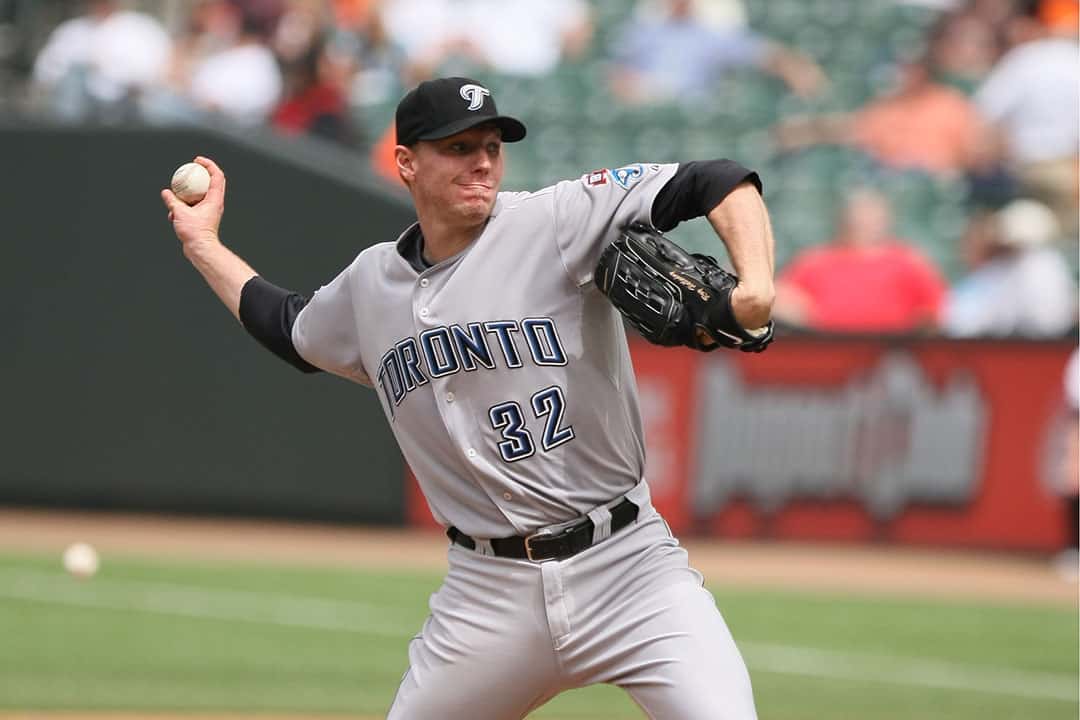Roy Halladay loved being a Blue Jay. He loved playing for Toronto’s baseball team, and he was vocal about it. Though a Blue Jays team fresh off of two consecutive ALCS appearances is genuinely something to be proud of today, Halladay, commonly referred to as ‘Doc,’ was part of a very different baseball team. His was an era before bat flips, sell-out games, walkoff home runs, and — to be blunt — competent baseball.
Halladay, nothing less than a prodigious pitcher, had little to be proud of, and yet he pitched in Toronto for 11 years, not once making it to the playoffs and not once complaining about it. This humbleness and kindness is what makes up the core of Halladay, a man who put as much effort into enriching Toronto’s community as he did to throwing his two-seam sinking fastball.
Halladay died at the age of 40 on November 7, when his plane crashed in the Gulf of Mexico.
It feels wrong to define by numbers a man so known for his generosity and spirit, but the numbers Doc put up in his 15 years of pitching in the MLB were tremendous. He recorded a 3.38 earned run average in 416 games played — 67 of which were complete games and 20 shutouts. Doc led the league in wins above replacement for pitchers four times: twice in the AL with the Blue Jays and twice in the NL with the Phillies.
Halladay was impressive off the field as well; his benevolent efforts to enrich a city that never gave him a postseason berth will forever be cherished and appreciated. While in Toronto, Doc and his wife Brandy established “Doc’s Box,” a suite that they annually rented out at Rogers Centre, where children from SickKids Hospital and their families could enjoy a day at the ballpark. He was also a keen contributor to Toronto charities, donating $100,000 to the Jays Care Foundation annually.
Though his impact and legacy within Toronto are unquestionable, it is important to note that, after being traded in 2009, Halladay pitched for the Philadelphia Phillies and added a couple more achievements to his already impressive arsenal. And, almost as if written by a novelist, in his first career playoff appearance with the Phillies in 2010, he threw a no-hitter. It was only the second post-season no-hitter in MLB history.
Earlier that year, he threw his first perfect game, becoming the 20th player in baseball history to record one and the first pitcher to ever throw a perfect game and a no-hitter in one season. Halladay was magic; genius, hard work, and talent all rolled into one spectacular pitching performance after another. Phillies fans understood why Doc was so admired in Toronto, and they showed him the same calibre of love.
I became a baseball fan after Halladay had retired in 2013 due to injury, so I never saw the man don powder blue or stark black on the mound in the Rogers Centre. While getting acquainted with Blue Jays greats, before Joe Carter, Vernon Wells, and even Roberto Alomar, I learned about Doc — the savant who, when pitching, uplifted an otherwise depleted baseball team into greatness.
When Doc took the mound, Toronto was no longer the vehicle for other teams to flex their pitching and hitting skills — no longer the punching bag. Once every five games, Doc worked his magic, commanding the league to pay attention to an unexceptional team with an exceptional player. With his two Cy Young wins and eight All Star appearances — six of which were with Toronto — Halladay maintained the Blue Jays in baseball fandom’s consciousness. For that, I came to revere his name.
He was a methodical and calm pitcher who worked his magic on the mound and stuck with his team through tough times. In an institution where teams have ever-changing rosters of more than 40 athletes, and play more than 160 matches a year, it is a true accomplishment to stay relevant after retirement and an even bigger one to be labeled a legend so quickly.
Those who were baseball fans during Doc’s reign had profound reactions to the announcement of his tragic death. Every sports news station remembered and celebrated the pitcher, every publication put out a touching tribute, and experts, journalists and fans alike joined forces in remembering Halladay’s generous spirit and incredible talent. The Toronto Maple Leafs and the Toronto Raptors both held moments of silence before the starts of their matches, effectively proving that Doc’s influence was not confined to baseball but rather spread into other sports.
It would be a disservice to remember Halladay as simply an athlete, and an injustice to recognize him solely by his statistics, as good as they may be. Halladay not only reignited a spark in Canada’s baseball community, but he put time and effort into enriching Toronto, both through his inadvertent ambassadorship when representing Canada’s team at an All-Star game and through Doc’s Box.
Already inducted into Canada’s Baseball Hall of Fame, it is only a matter of time before Doc gets his spot in Cooperstown. Now the conversation turns to the Blue Jays and how they will honour the man who breathed life into a team that was otherwise bereft of it. Put his name on the Level of Excellence, retire his number, erect a statue of him outside of the Rogers Centre — do anything and all that is possible to ensure that every generation of Toronto fans cherishes, appreciates, and reveres the legend that was Roy Halladay.


